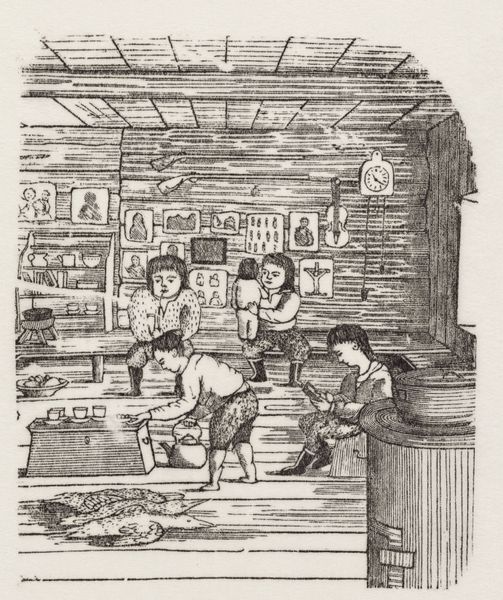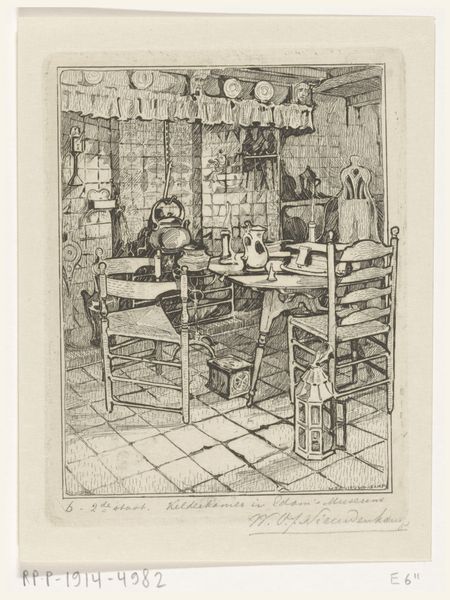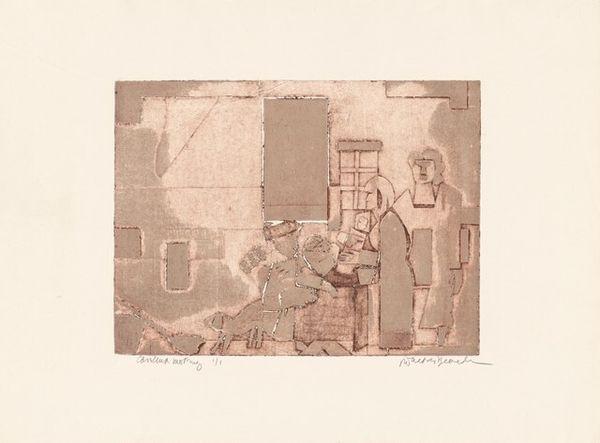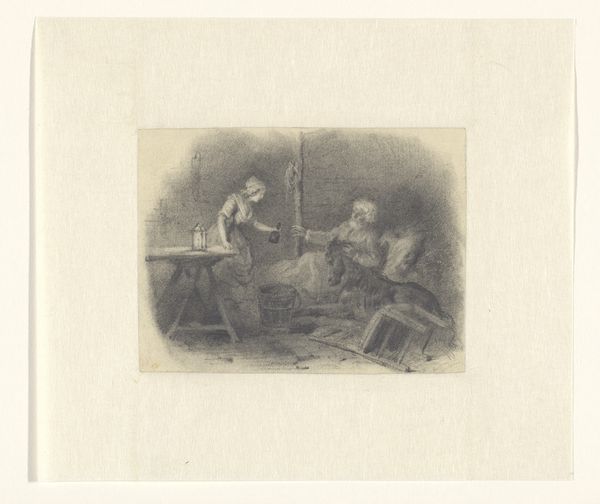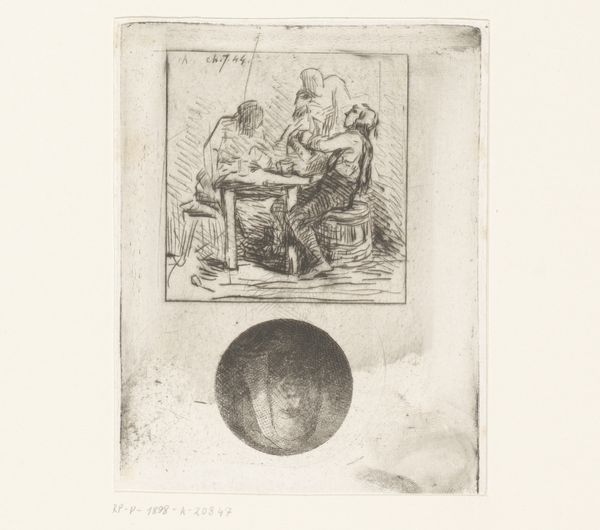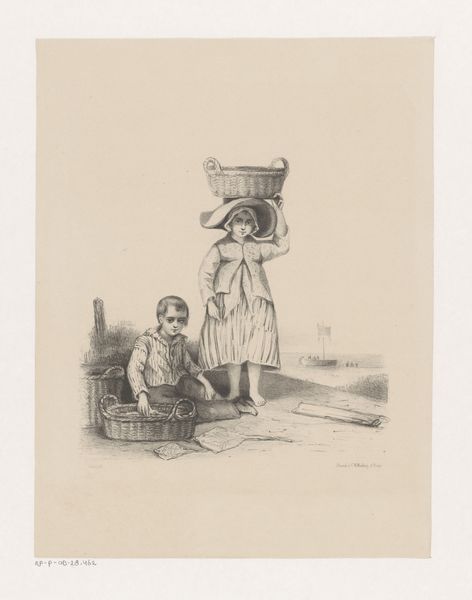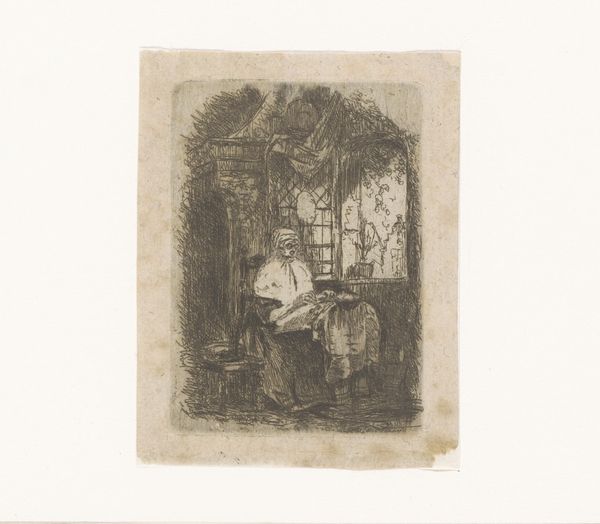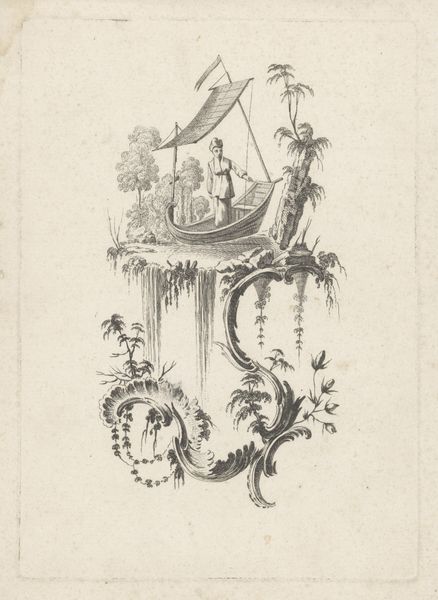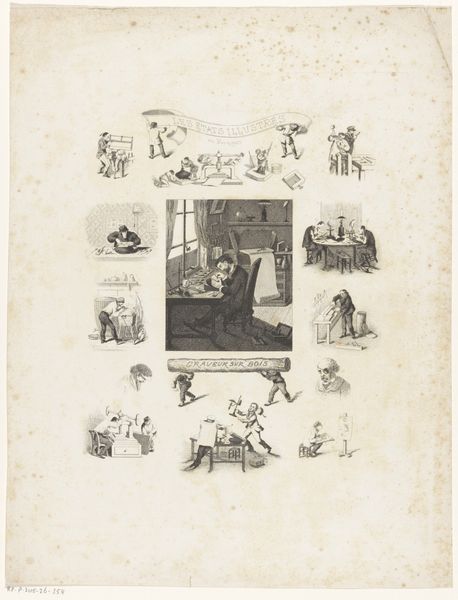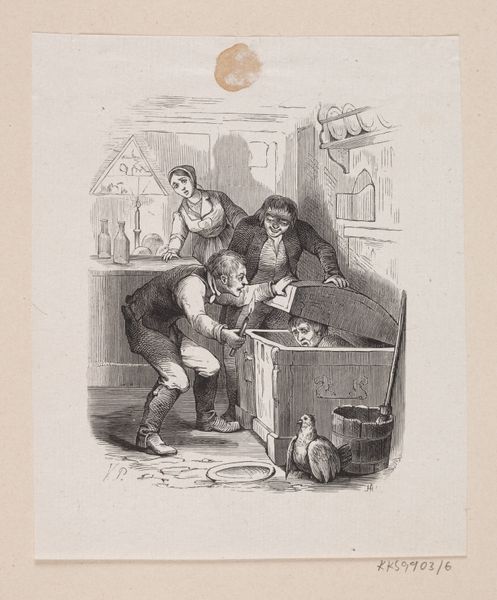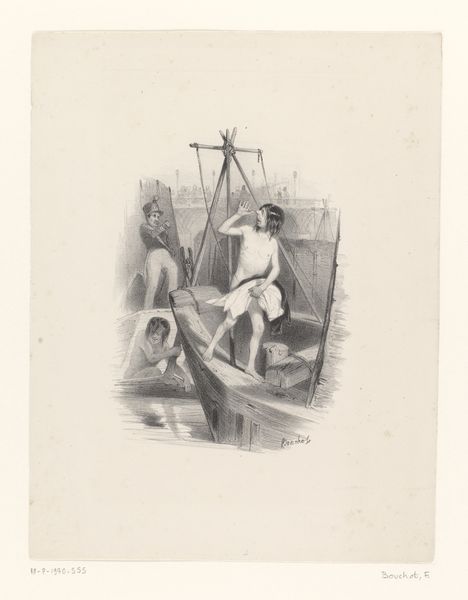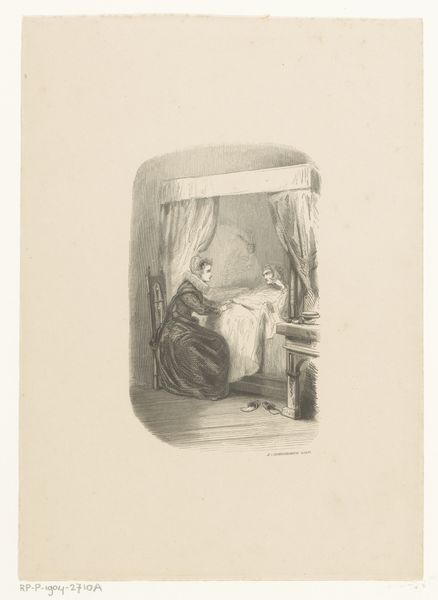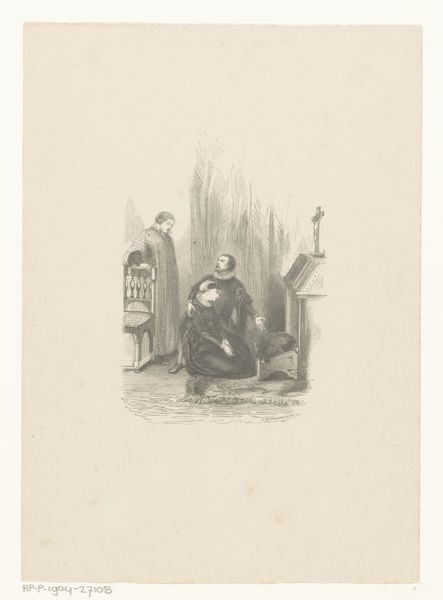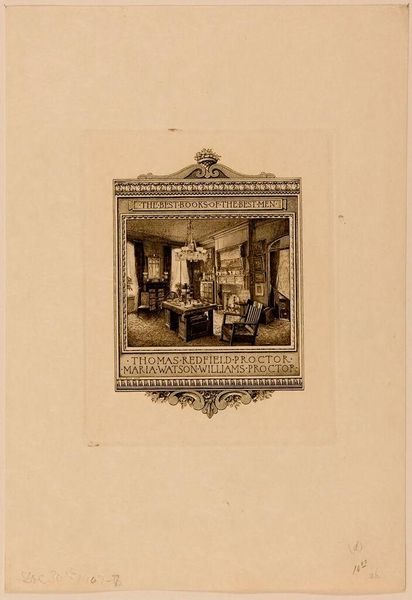
drawing, watercolor
#
portrait
#
drawing
#
caricature
#
caricature
#
figuration
#
watercolor
#
watercolour illustration
#
decorative-art
Dimensions: overall: 40.8 x 30.6 cm (16 1/16 x 12 1/16 in.)
Copyright: National Gallery of Art: CC0 1.0
Editor: This is Paul Kelly’s "Toy Bank," made sometime between 1935 and 1942, a watercolor and drawing piece. The first thing that strikes me is its meticulous detail, but it feels slightly… unsettling, given the stereotypical figure on top. What do you see in this piece, from an artistic perspective? Curator: Well, focusing on the formal elements, the artist’s technique creates a fascinating tension. Notice how Kelly’s use of watercolor provides a delicate, almost ethereal quality, juxtaposed with the sharp lines defining the toy bank’s structure. How does this contrast strike you? Editor: It's interesting. It makes it feel less like a playful toy and more like an object demanding attention. The attention to detail, especially the ornamentation on the bank itself, feels almost too precise for something meant for a child. Curator: Precisely. Consider the title: "Toy Bank." Semiotically, a toy suggests play, while a bank represents structure and savings. Kelly merges these conflicting symbols, enhanced by the caricature, creating a dissonance. It's not just about representation but the interplay of form and idea. What does the color palette evoke for you? Editor: It's quite muted, mostly browns and grays, with subtle pops of color in the figure's clothing. It feels somewhat subdued, adding to that unsettling feeling I mentioned earlier. I suppose it could be hinting at the economic context of the time, maybe even questioning societal structures. Curator: Indeed. While societal interpretations are valid, and potentially revealing from a modern interpretive position, analyzing its composition and materiality allows us to delve into the artist’s deliberate construction of meaning. Editor: So, it's a formal examination can offer rich interpretations independent of cultural context. That's given me a lot to think about! Curator: And, hopefully, allows a different method of seeing, too. It has been insightful exploring its various structural qualities.
Comments
No comments
Be the first to comment and join the conversation on the ultimate creative platform.
